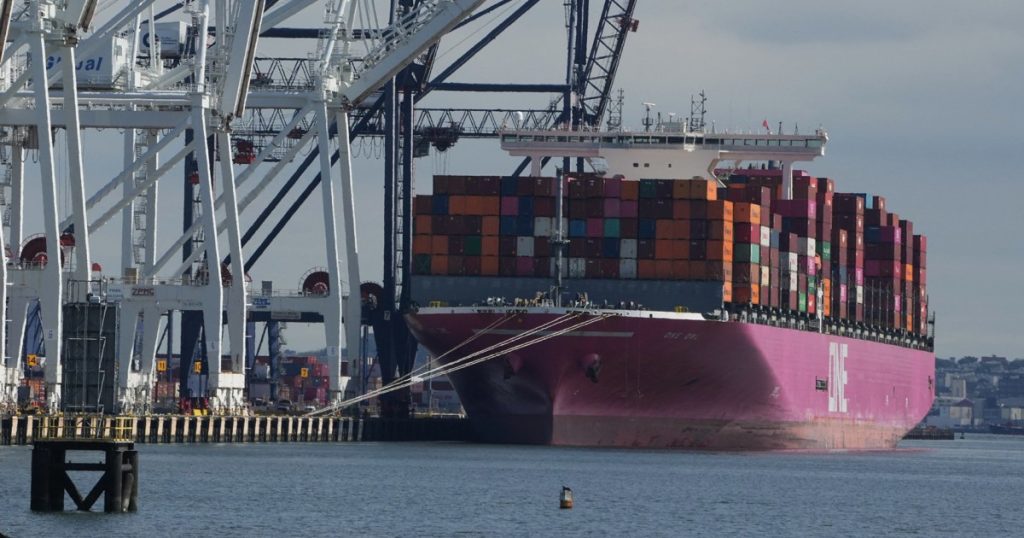The biggest dockworker strike in nearly half a century has caused long lines of container ships outside major U.S. ports, preventing unloading and potentially leading to shortages of essential goods. Negotiations between the International Longshoremen’s Association and employers have not been scheduled, but pressure from the White House has prompted port owners to consider new talks. The vessel backlog outside strike-affected East Coast and Gulf Coast ports is increasing, with the possibility of extending delivery times and increasing costs if ships divert to West Coast ports via the Panama Canal.
The strike, initiated by 45,000 port workers from Maine to Texas, is the ILA’s first major stoppage since 1977. The union is seeking a significant pay raise and a commitment to halt port automation projects that could eliminate jobs. The United States Maritime Alliance (USMX) employer group had offered a 50% pay increase, which the ILA deemed insufficient. President Joe Biden’s administration has supported the union and urged port employers to increase their offer in order to reach a deal, citing the shipping industry’s profits during the COVID-19 pandemic.
While the closure of ports may not immediately affect consumer prices due to companies accelerating shipments in anticipation of the strike, a prolonged stoppage could eventually lead to higher prices, particularly in the food sector. The strike impacts 36 ports across the country, including major hubs like New York, Baltimore, and Houston. The National Retail Federation and other trade associations have called on the Biden administration to use federal authority to end the strike, warning of potential devastating consequences for the economy.
Despite the ongoing strike and growing vessel backlog outside major U.S. ports, no negotiations have been scheduled between the ILA and employers. The possibility of diverting ships to West Coast ports presents challenges in terms of increased costs and delivery times. The strike, which began on Tuesday, has disrupted operations at ports handling a wide range of containerized goods, further emphasizing the potential impact on the economy if the strike continues.
The ILA’s demands for a pay raise and job security through halting port automation projects have been met with a partial offer from the USMX that the union deems inadequate. President Biden’s administration’s support for the union has increased pressure on port employers to reconsider their offer. Despite the potential economic consequences of the strike, negotiations have yet to resume, and the vessel backlog outside U.S. ports continues to grow.
In conclusion, the ongoing dockworker strike in the United States has resulted in long lines of container ships outside major ports and the potential for shortages of essential goods. While negotiations have not been scheduled, pressure from the White House and concerns about the strike’s impact on the economy have prompted calls for a resolution. The strike, which began on Tuesday, has disrupted operations at 36 ports nationwide and highlights the challenges facing both the ILA and port employers in reaching a mutually acceptable agreement.













